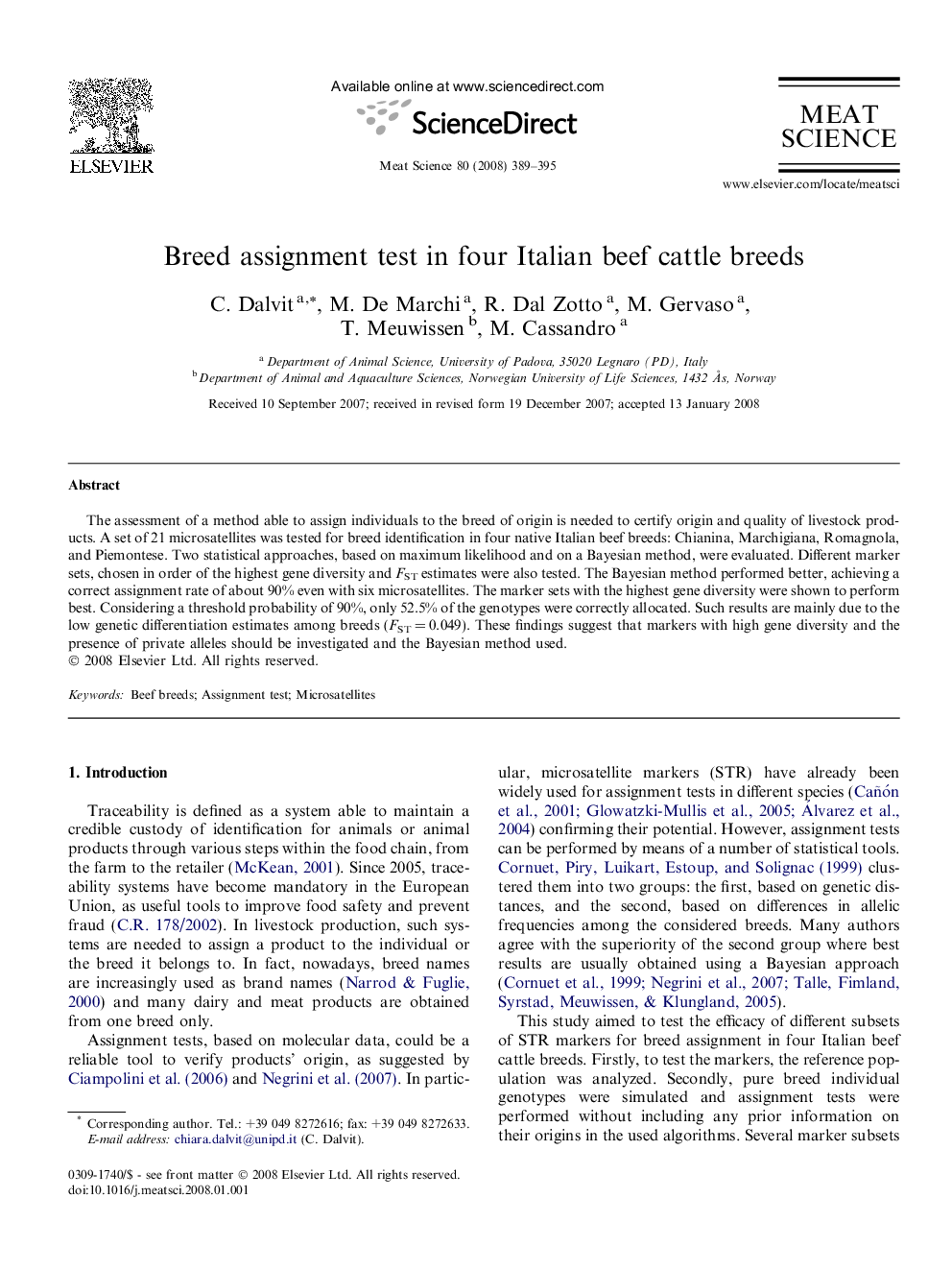| Article ID | Journal | Published Year | Pages | File Type |
|---|---|---|---|---|
| 2451440 | Meat Science | 2008 | 7 Pages |
The assessment of a method able to assign individuals to the breed of origin is needed to certify origin and quality of livestock products. A set of 21 microsatellites was tested for breed identification in four native Italian beef breeds: Chianina, Marchigiana, Romagnola, and Piemontese. Two statistical approaches, based on maximum likelihood and on a Bayesian method, were evaluated. Different marker sets, chosen in order of the highest gene diversity and FST estimates were also tested. The Bayesian method performed better, achieving a correct assignment rate of about 90% even with six microsatellites. The marker sets with the highest gene diversity were shown to perform best. Considering a threshold probability of 90%, only 52.5% of the genotypes were correctly allocated. Such results are mainly due to the low genetic differentiation estimates among breeds (FST = 0.049). These findings suggest that markers with high gene diversity and the presence of private alleles should be investigated and the Bayesian method used.
